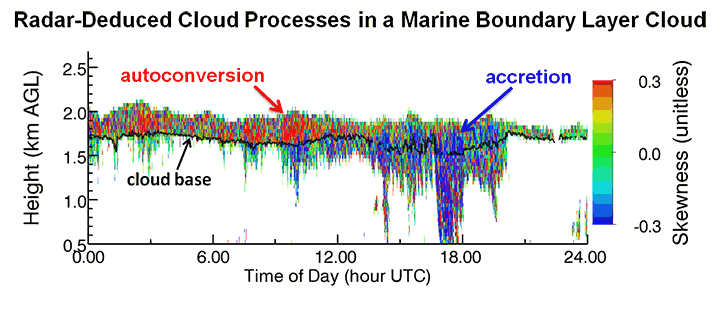
Cloud Processes Group
ASR Boundary Layer Cloud Processes
Low-altitude, boundary layer clouds represent a particular challenge to climate model simulations and can have a large impact on climate projections. Their lifecycle is governed by multiple coupled processes that operate at scales that are smaller than climate model computation grid sizes (i.e., are subgrid scale) and whose relative roles are difficult to ascertain, such as the interplay among cloud dynamics (vertical velocity, turbulence, entrainment mixing), cloud-to-drizzle transitions, and aerosol-cloud interactions.
Through the ATACS approach, BNL researchers work to understand and improve the representation of these processes in climate models, focusing on the following topics.
- Develop novel retrievals, particularly those using cloud radar Doppler spectra, to quantify cloud dynamics, microphysics, drizzle properties, and cloud processes (e.g., accretion and autoconversion) to understand their impact on cloud lifecycle and their dependencies on environmental factors;
- Apply these and other observational analyses, including those using in situ aircraft data, to examine and improve the representation of critical cloud properties and processes in cloud scale models;
- Develop parameterizations of drizzle onset and drizzle rate for use in models; and
- Examine the impacts of unresolved cloud spatial structure on grid-scale microphysical processes and radiative transfer to initiate methods for representing these effects statistically in GCMs.





